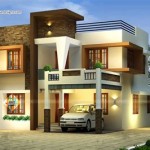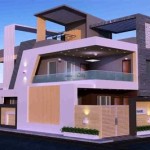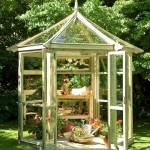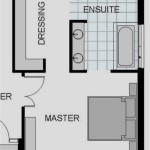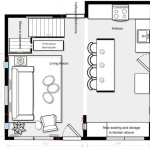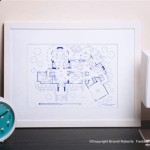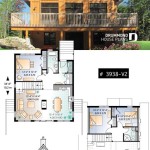House Plans for Lake Houses
Lakefront living offers a unique blend of tranquility and recreational opportunities. Choosing the right house plan is crucial to maximizing enjoyment of the lakefront lifestyle. Several key factors influence the ideal lake house design, from maximizing views to incorporating practical features for water activities.
One of the primary considerations when selecting a lake house plan is optimizing the views. Large windows, expansive decks, and strategically placed patios capitalize on the waterfront scenery. Open floor plans can further enhance the sense of connection with the outdoors, allowing natural light to flood the interior and providing unobstructed sightlines to the water.
Functionality is another important aspect of lake house design. Mudrooms or designated entryways provide space for storing wet gear and keeping the main living areas clean. Ample storage is also essential for housing water sports equipment, such as kayaks, paddleboards, and life vests. Consider incorporating built-in storage solutions to keep these items organized and easily accessible.
The architectural style of the lake house should complement the surrounding environment. Popular styles for lake houses include rustic, craftsman, and contemporary designs. Rustic designs often incorporate natural materials like wood and stone, creating a warm and inviting atmosphere. Craftsman-style homes emphasize handcrafted details and a connection to nature. Contemporary designs feature clean lines and minimalist aesthetics, offering a sleek and modern feel.
Size and layout are also key considerations. Whether a cozy cabin or a spacious multi-level home is desired, the floor plan should accommodate the specific needs and lifestyle of the occupants. Consider the number of bedrooms and bathrooms, as well as the desired layout for common areas like the kitchen, living room, and dining area. For families or those who entertain frequently, a larger home with multiple living spaces might be preferable. A smaller, more intimate design might be suitable for a couple or individual seeking a peaceful retreat.
Outdoor living spaces are a defining feature of lake house design. Decks, patios, and porches extend the living area outdoors, providing ample space for relaxation and entertainment. Consider incorporating features like outdoor kitchens, fireplaces, or fire pits to enhance the enjoyment of these spaces. Covered areas offer protection from the elements, allowing for year-round use.
Accessibility to the water is another important factor to consider. Depending on the location and terrain, various options may be available for accessing the lake. A private dock or pier provides convenient access for boating, swimming, and fishing. A gently sloping path to the water's edge is ideal for kayaking and paddleboarding. Consider incorporating features like boat lifts or storage sheds to protect watercraft and equipment.
Energy efficiency is an increasingly important factor in home design, and lake houses are no exception. Consider incorporating energy-efficient features like insulated windows, proper insulation, and energy-efficient appliances. These features can help reduce energy consumption and lower utility costs.
Local building codes and regulations should be taken into account when designing a lake house. These regulations may dictate setbacks from the water, building height restrictions, and other requirements specific to waterfront properties. It’s crucial to consult with local authorities to ensure compliance with all applicable regulations.
Maintenance and upkeep are important aspects of lake house ownership. Materials that are resistant to moisture and weathering are essential for minimizing maintenance requirements. Consider using durable materials like composite decking, vinyl siding, and metal roofing. Regular inspections and maintenance are crucial for preserving the longevity and value of the lake house.
Budget is another important factor that influences the design and construction of a lake house. Establishing a realistic budget early in the planning process helps guide decisions about size, materials, and features. Working with a qualified architect and builder can help ensure that the project stays within budget.
The orientation of the house on the lot is another important consideration. Optimizing the placement of the house can maximize views, enhance natural light, and take advantage of prevailing breezes. Consider the sun's path throughout the day to determine the best orientation for the house.
Landscaping plays a significant role in the overall aesthetic of a lake house. Native plants and drought-tolerant landscaping can minimize maintenance requirements and enhance the natural beauty of the surroundings. Consider incorporating features like rain gardens or permeable paving to manage stormwater runoff and protect water quality.
Finally, consulting with experienced professionals is crucial throughout the design and construction process. A qualified architect can help develop a plan that meets specific needs and incorporates desired features. A reputable builder can ensure that the construction process is completed efficiently and to a high standard.

Lake House Plans Floor Lakefront The Designers

Affordable And View Worthy Lake Homes Dfd House Plans Blog

Open Concept Small Lake House Plans Houseplans Blog Com

Lake House Plans Blog Homeplans Com

Best Lake House Plans Waterfront Cottage Simple Designs

Lake House Plans Waterfront Monster

1 Story Craftsman Style Lake House Plan With Wrap Around Deck Pelican Bay Plans Small Houses

Lake House Plans Specializing In Home Floor

Lake House Plans Blog Homeplans Com

Lake House Plans Waterfront Monster

